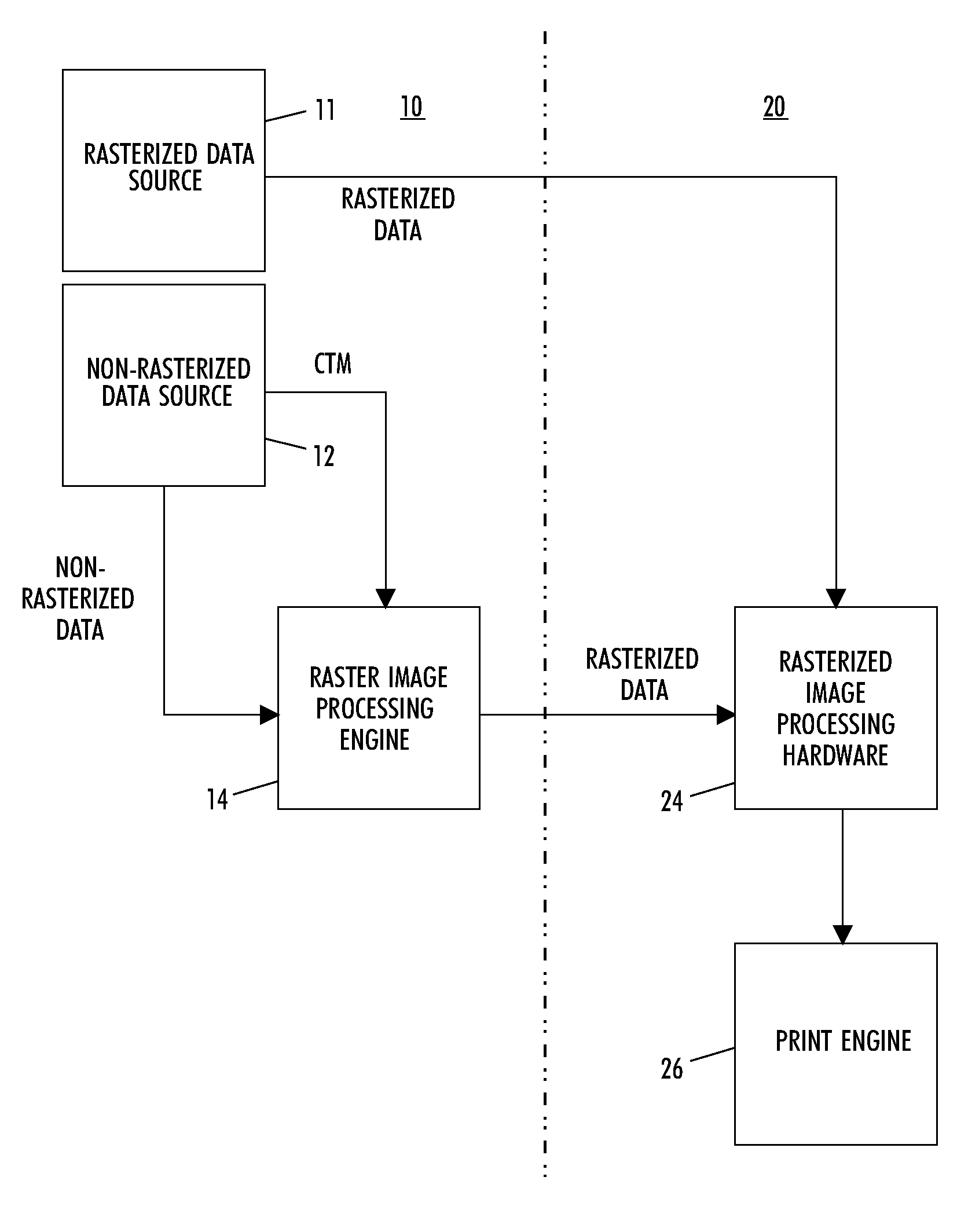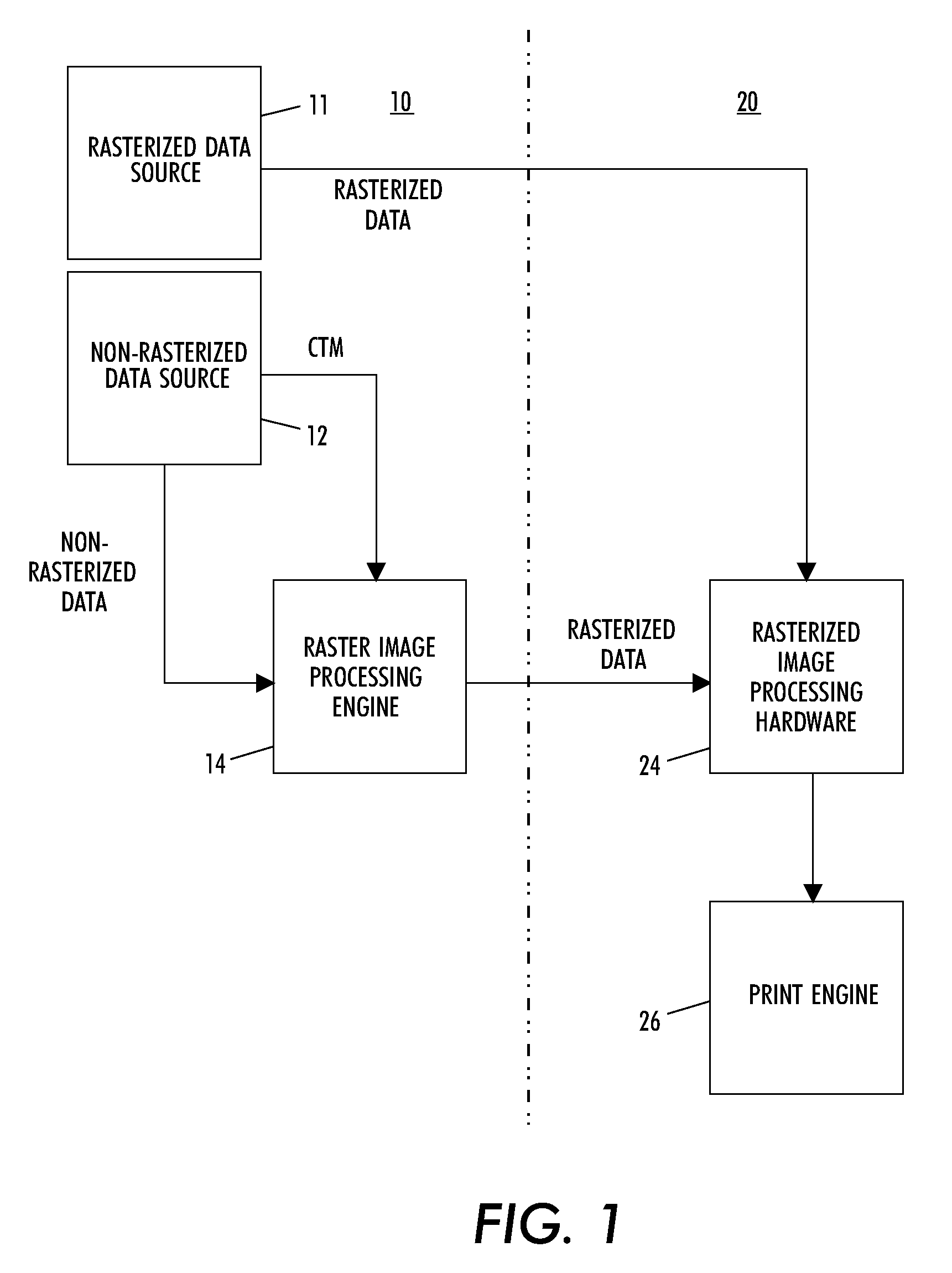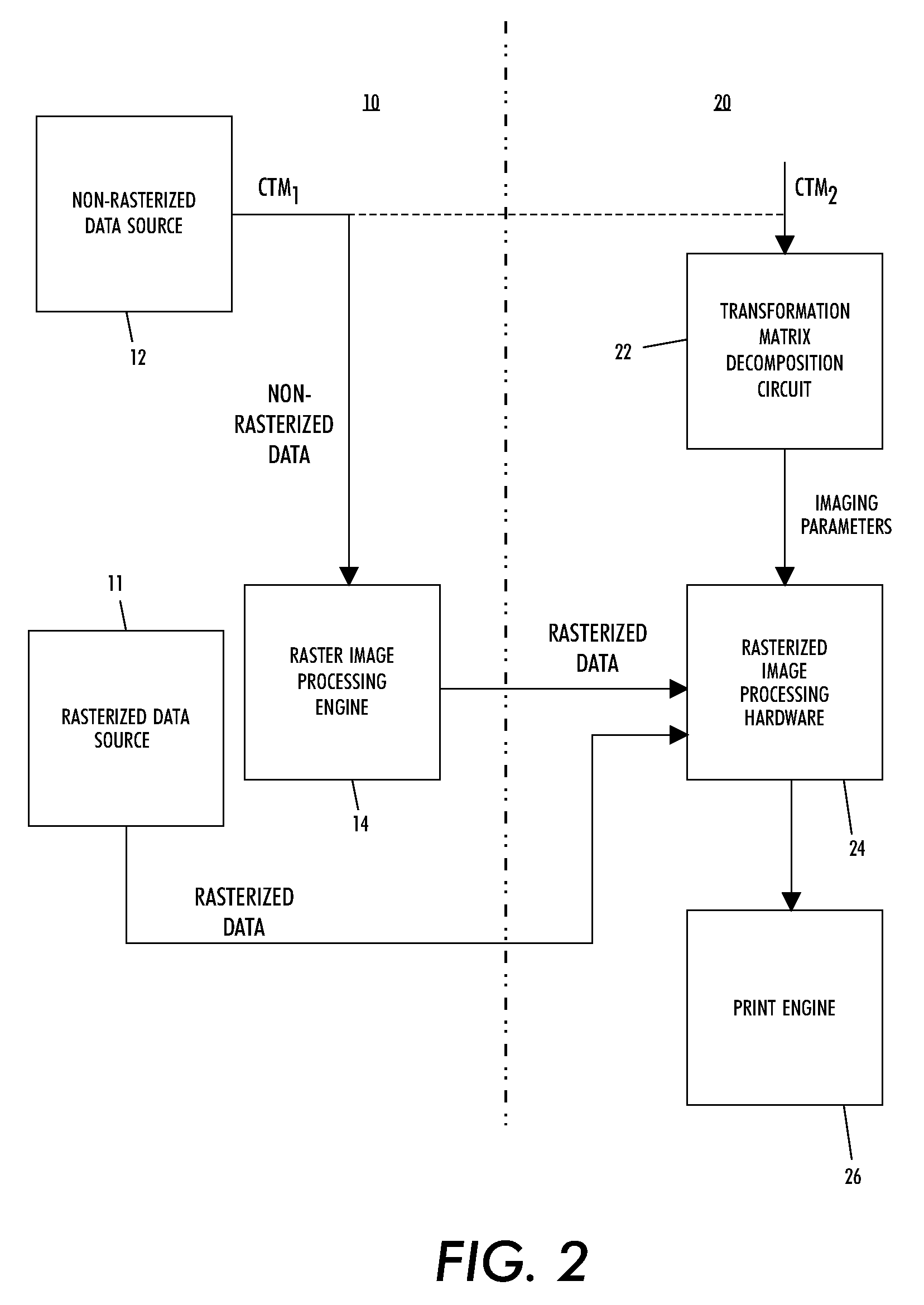Method and system for utilizing transformation matrices to process rasterized image data
a transformation matrix and image data technology, applied in the field of methods and systems for utilizing transformation matrixes to process rasterized image data, can solve the problems of matrix-based algorithms and hardware, decomposition, scaling, translation values needed to program the raster,
- Summary
- Abstract
- Description
- Claims
- Application Information
AI Technical Summary
Problems solved by technology
Method used
Image
Examples
Embodiment Construction
[0023]For a general understanding, reference is made to the drawings. In the drawings, like references have been used throughout to designate identical or equivalent elements. It is also noted that the drawings may not have been drawn to scale and that certain regions may have been purposely drawn disproportionately so that the features and concepts could be properly illustrated.
[0024]It is noted that the various processes described below can be implemented in or by application specific circuits, programmable circuits, software, or firmware, or any combination thereof.
[0025]FIG. 2 shows a block diagram illustrating a system for rendering rasterized data using the decomposition of a composite transformation matrix. As illustrated in FIG. 2, the system is, for the purposes of explanation, split into a source subsystem 10 and a rasterized data processing subsystem 20.
[0026]With respect to the source subsystem 10, the data to be rendered is sourced from either a rasterized data source 1...
PUM
 Login to View More
Login to View More Abstract
Description
Claims
Application Information
 Login to View More
Login to View More - R&D
- Intellectual Property
- Life Sciences
- Materials
- Tech Scout
- Unparalleled Data Quality
- Higher Quality Content
- 60% Fewer Hallucinations
Browse by: Latest US Patents, China's latest patents, Technical Efficacy Thesaurus, Application Domain, Technology Topic, Popular Technical Reports.
© 2025 PatSnap. All rights reserved.Legal|Privacy policy|Modern Slavery Act Transparency Statement|Sitemap|About US| Contact US: help@patsnap.com



